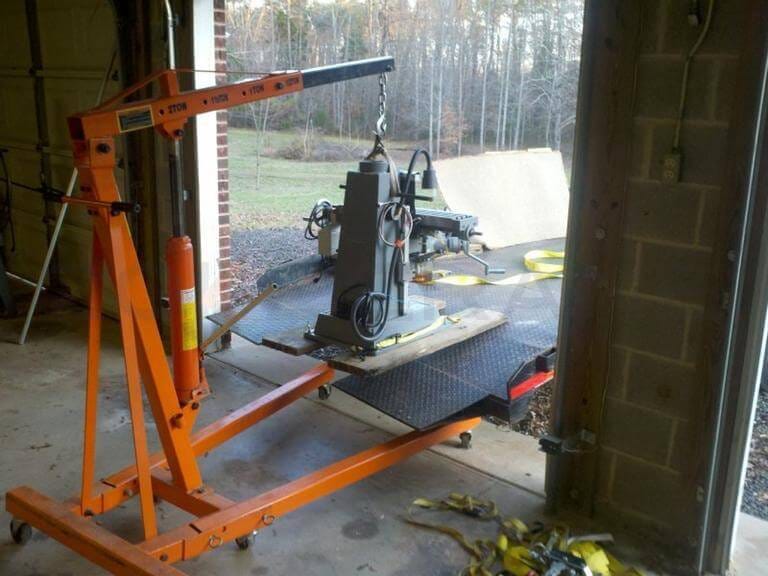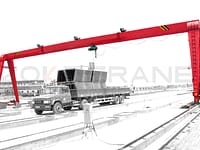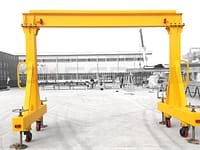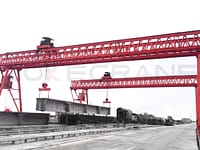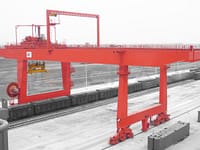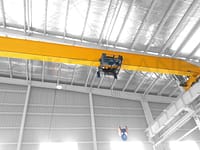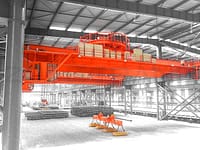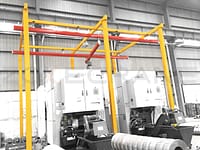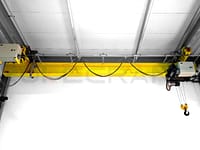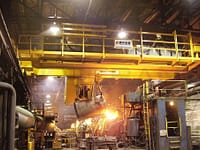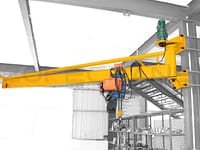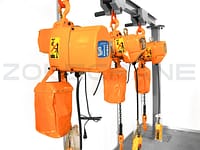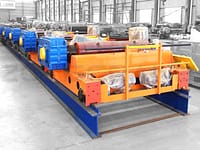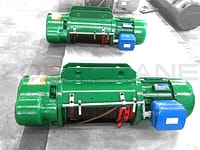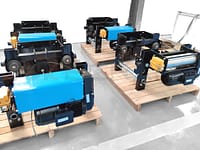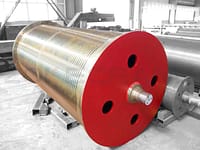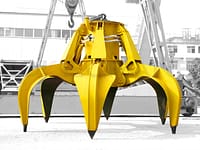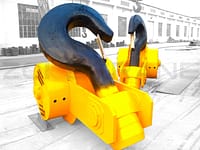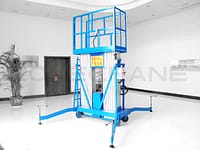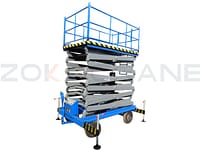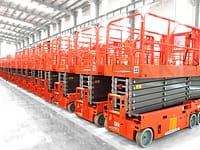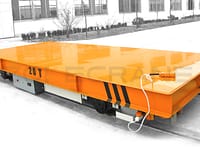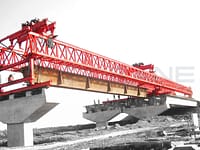A gantry crane is a crane built atop a gantry, which is a structure used to straddle an object or workspace. They can range from enormous "full" gantry cranes, capable of lifting some of the heaviest loads in the world, to small shop cranes, used for tasks such as lifting automobile engines out of vehicles. They are also called portal cranes, the "portal" being the empty space straddled by the gantry.
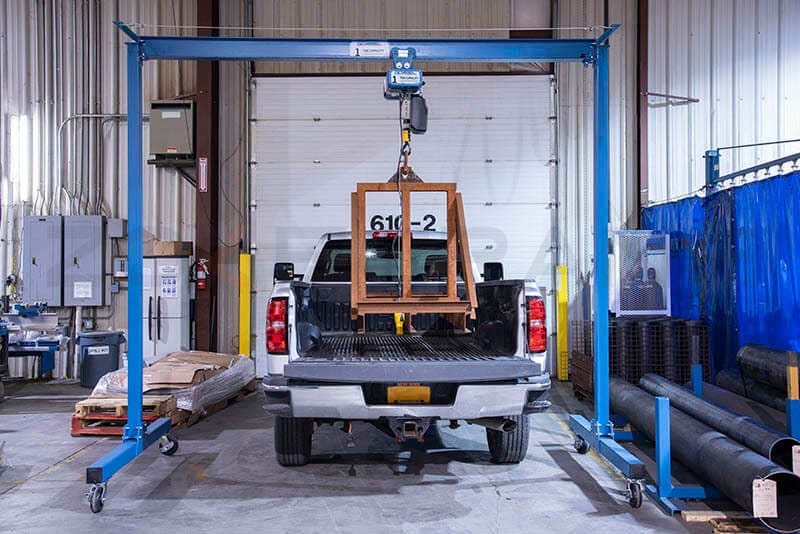
Portable gantry crane
Portable gantry cranes are used to lift and transport smaller items, usually less than 10 tonnes (9.8 long tons; 11 short tons). They are widely used in the HVAC, machinery moving and fine art installation industries. Some portable gantry cranes are equipped with an enclosed track, while others use an I-beam, or other extruded shapes, for the running surface. Most workstation gantry cranes are intended to be stationary when loaded, and mobile when unloaded. Workstation Gantry Cranes can be outfitted with either a wire rope hoist or a lower capacity chain hoist.
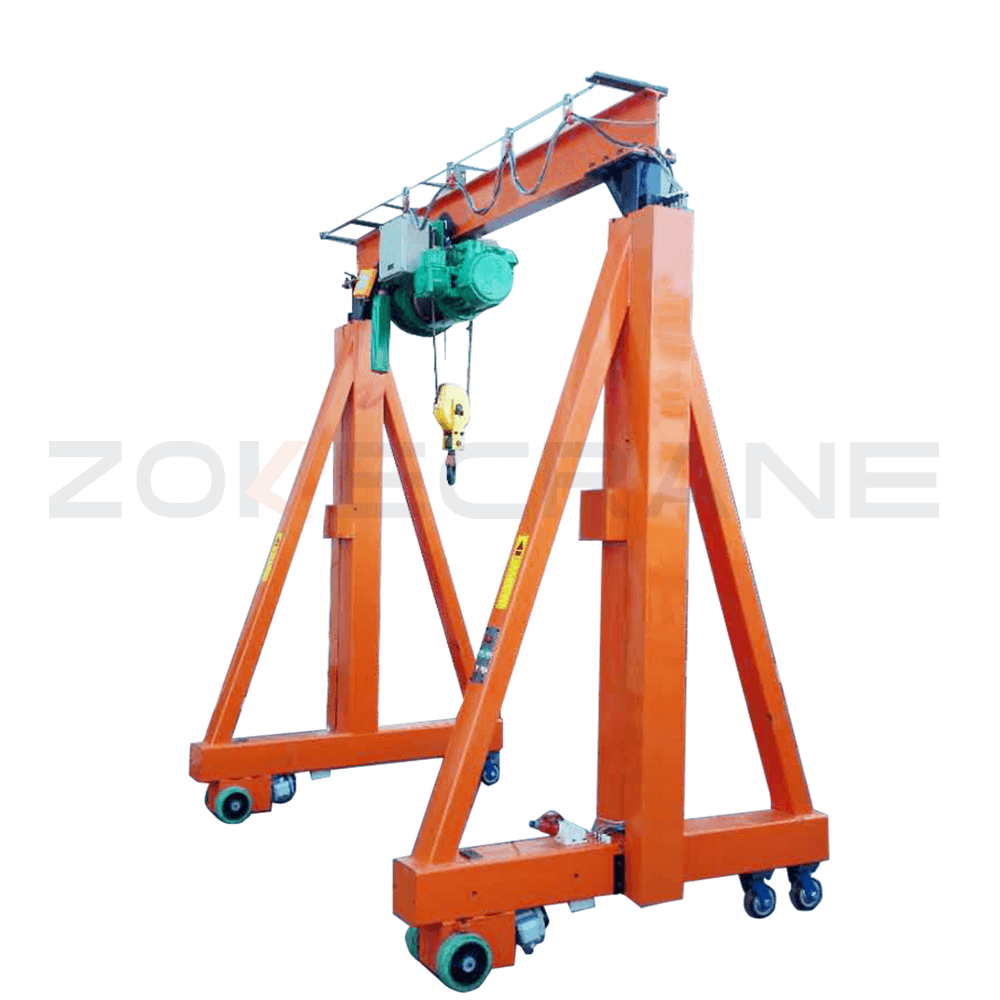
Engine crane
An engine crane (also referred as engine hoist[1]) is a common repair tool used in vehicle repair shops to remove or install gasoline or diesel engines in small and crowded vehicle engine compartments. It uses a heavy cantilevered support structure to hold the engine in mid-air so that the mechanic can carefully connect or disconnect fragile hoses and wires on the engine to the frame of the vehicle.
The engine crane is commonly used in combination with the engine stand so that the removed engine can be rotated in midair to provide access to underside surfaces of the engine.
Engine cranes are typically mounted on large casters so that an engine can be lifted straight up out of an engine compartment and then rolled away from the immobile vehicle frame.
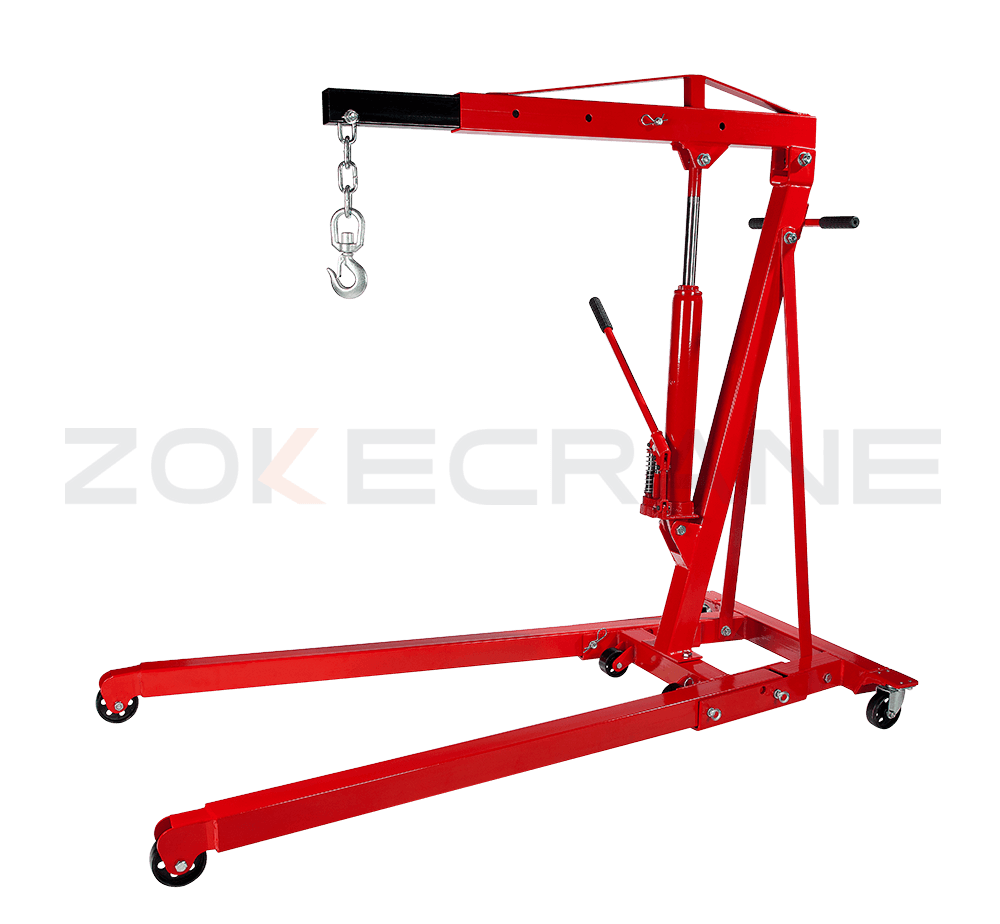
Most engine cranes are equipped with a telescopic boom which can be extended to reach engine blocks located further into the engine compartment. At the end of the boom there is a grab hook where lifting chains, slings or a load leveler can be attached for lifting purposes.
